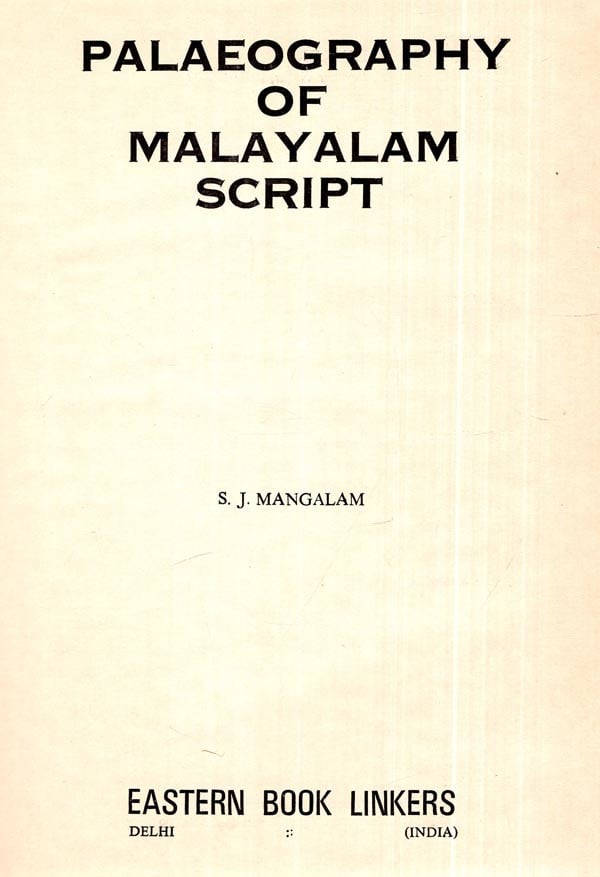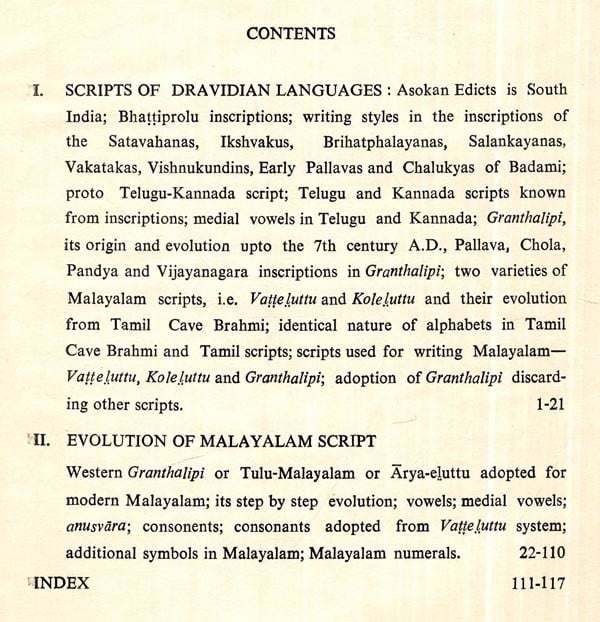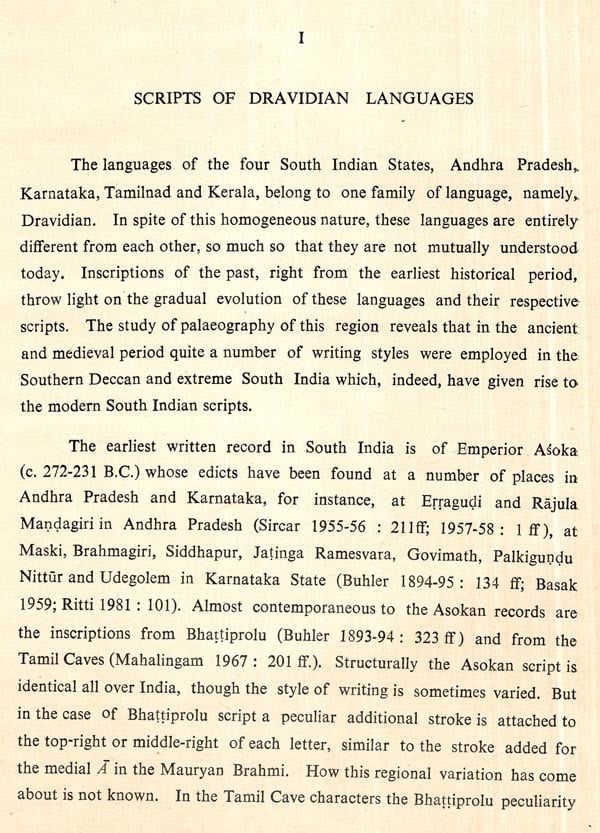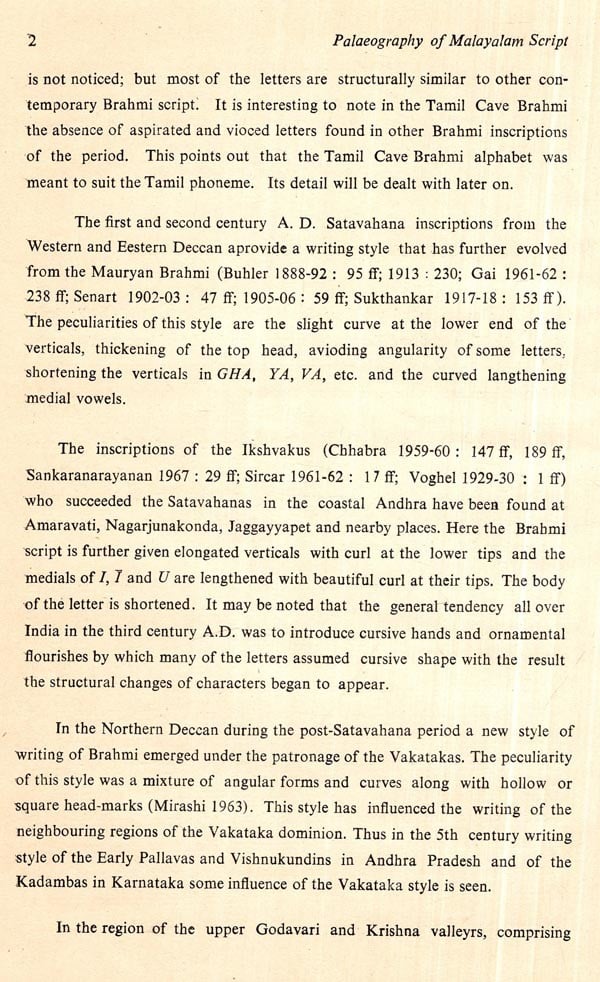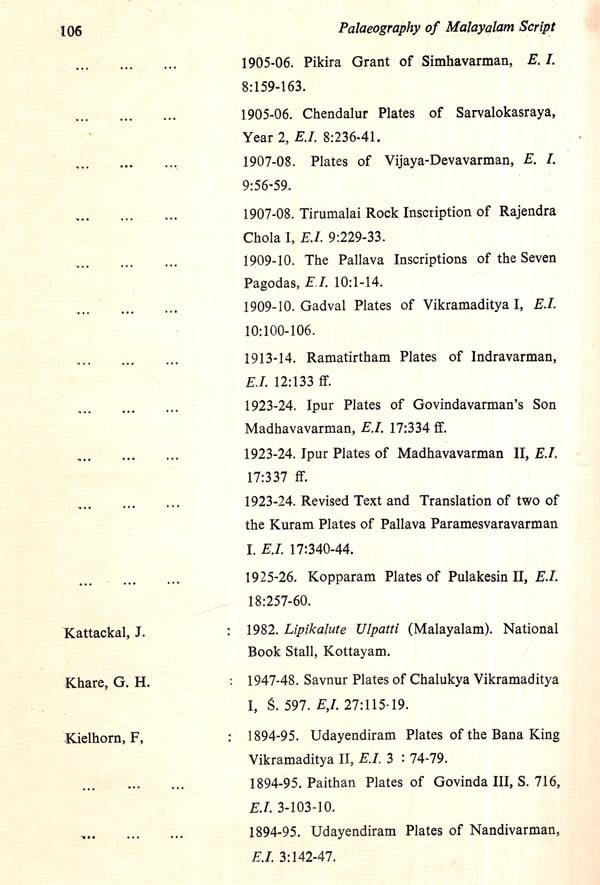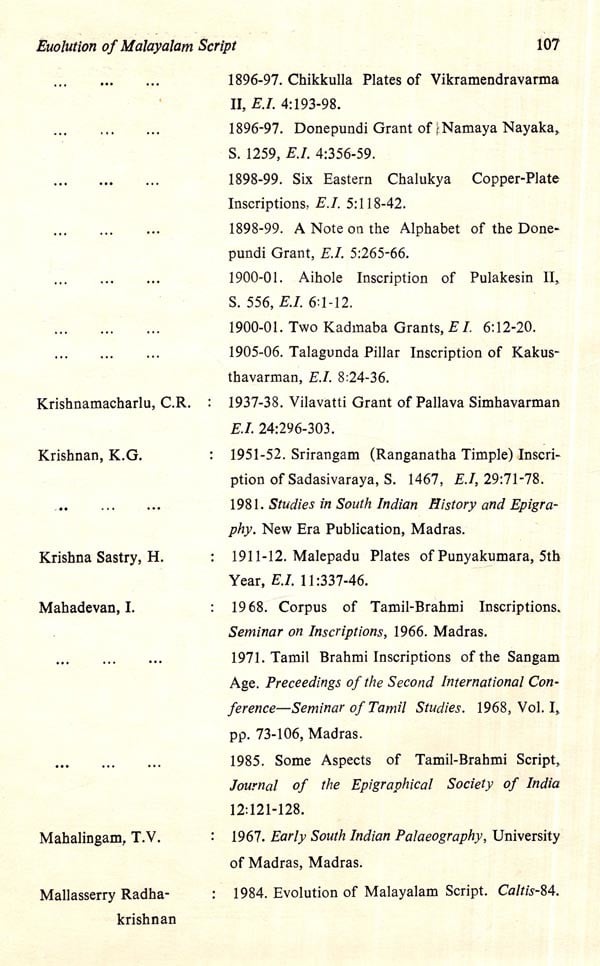
Palaeography of Malayalam Script (An Old and Rare Book)
Book Specification
| Item Code: | AZF297 |
| Author: | S.J. Mangalam |
| Publisher: | EASTERN BOOK LINKERS |
| Language: | ENGLISH |
| Edition: | 1988 |
| Pages: | 118 |
| Cover: | HARDCOVER |
| Other Details | 10.00X6.50 inches |
| Weight | 382 gm |
Book Description
The author after obtaining his post-graduate degree in Philosophy, Psychology and Religious Science, distinguished himself in Master degree in Ancient Indian Culture from the Department of Archaeology, Deccan College Post Graduate and Research Institute, University of Poona, and got his Doctorate from the same Institute in 1978. Thereafter he has been on the teaching staff of the the Institute lecturing on various aspects of Ancient Indian Culture such as Epigraphy, Numismatics, Iconography, Political History, Greater India, etc. He has been a U.G.C. Junior and Senior Research Fellow and Research Associate before his present assignment.
The earliest known documents in Malayalam, dated to the 9th century A.D., are found in Vatteluttu characters. This script was continuously employed upto the modern times. Kole juttu was another script that was widely used all over Kerala. Numerous inscriptions and mano scripts in Vatte luttu and Kole juttu have come to light in the region. While Vatte luttu acquired the regional names such as Southern-Malayalam and Namam-Minam, Kole luttu was known as Malayirma, Malayalma and Malayayma. On account of the continuous Sanskritisation of Malayalam language as well as the pauperous nature of local Dravidian scripts to express certain Indo-Aryan phonemes, the Western Granthalipi-locally known as Arya-eluttu—which was used only for Sanskrit writing, was favoured not only by Sanskrit writers but also by Malayalam writers using Vagtehuttu and Kole luttu scripts in order to express Sanskrit words. Ultimately, in the 17th century A.D., Tunchattu Ezhuttachan applied Arya-eluttu to the vernacular Malayalam, supplanting Vatteluttu and Kolejuttu, and as be wrote his manuscripts on palm leaves the script acquired more curves and curls than required and it is this style that was adopted when printing was introduced in Kerala in 1836.
**Contents and Sample Pages**
